See Here, Private Hargrove

Brief Synopsis
Cast & Crew
Wesley Ruggles
Robert Walker
Donna Reed
Keenan Wynn
Robert Benchley
Ray Collins
Film Details
Technical Specs

Synopsis
Just after his managing editor, Brodie S. Griffith, lectures him on his sloppy reporting techniques, young journalist Marion Hargrove receives his draft notice. On the bus to Fort Bragg, North Carolina, where he is to receive his training as a field artillery specialist, Hargrove meets fellow recruits Orrin Esty and Mulvehill. Hargrove, Esty, Mulvehill and a fourth recruit, Bill Burk, become fast friends, forming their own unit within their assigned battery. Although Hargrove is anxious to become a good soldier, his careless, forgetful nature continually gets him into trouble, and he spends much of his time cleaning trashcans for K.P. duty. Hargrove is also a poor marksman, leading his sergeants, Cramp and Heldon, to wonder whether he will ever graduate from basic training. When Hargrove receives a sympathy check from Griffith, to whom he had submitted an article about his military experiences, the wheeling-dealing Mulvehill decides that Hargrove's writing could be a source of added income for them all and encourages him to continue. One evening, outside the camp's service club in Fayetteville, Hargrove spies Carol Holliday and is instantly smitten. Seeing an opportunity, Mulvehill tells Hargrove that Carol is a member of his newly formed Date Bureau and offers to set him up for five dollars. Hargrove eagerly accepts Mulvehill's deal and, believing that Carol is expecting him, shows up at her house that Saturday night. When a surprised Carol finds out that Hargrove paid five dollars to date her, she becomes furious and prepares to throw him out. Feeling sorry for the bemused private, Carol's uncle George convinces her to forgive Hargrove, and she and Hargrove enjoy a romantic evening together. The lovestruck Hargrove makes plans with Carol to see each other the following Saturday, just before Carol, who lives in New York, is to return home. Over the next week, Hargrove's military performance greatly improves, but on Saturday, his typewriter accidentally falls on top of his commanding officer's head during an inspection and he is given street cleaning detail. To save Hargrove embarrassment, Mulvehill and Esty tell Carol he has contracted measles and is under quarantine. Despite the privates' efforts to distract her, Carol sees Hargrove cleaning the street, but forgives him for missing their date and kisses him. Later, after Carol has left for New York, a depressed Hargrove announces that he is through with writing. When Mulvehill reminds Hargrove that the only way he can afford to go to New York during his furlough is to keep writing, however, Hargrove relents. Hargrove then surprises his battery by scoring the most points during an artillery drill and is promoted to corporal. Hargrove's success is shortlived, however, as he leads Mulvehill, Burk and Esty to the wrong headquarters during a field exercise. Sure that his furlough will be denied, the demoted Hargrove spends all of his cash entertaining his friends and is mortified when he learns that his furlough request has been honored. Mulvehill then makes a deal with Hargrove, in which he, Esty and Burk will lend Hargrove enough money for his furlough in exchange for a percentage of his future earnings. The now-flush Hargrove races up to New York, and over the next week, cements his relationship with Carol. Soon after Hargrove returns to Fort Bragg, Mulvehill convinces him that they should apply for a transfer to a public relations office, where Hargrove's journalistic skills can be put to use. Before they receive word about their request, the battery is shipped to another camp, and the men are subjected to more grueling training. Hargrove then learns that an autobiographical manuscript that he had submitted to various publishers has been accepted by one. As agreed, the four privates divide up Hargrove's $300 advance, but when word comes that Hargrove and Mulvehill's transfer has come through, a disgusted Esty and Burk reject the money. Hargrove and Mulvehill move to their comfortable quarters at the camp's public relations office, where a guilt-ridden Hargrove churns out copy for the Army. As soon as the privates hear that their platoon is being shipped overseas, they request to be transferred back, and receive their new orders moments before the battery's train leaves for the coast.

Director

Wesley Ruggles
Cast

Robert Walker
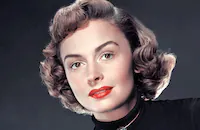
Donna Reed

Keenan Wynn

Robert Benchley
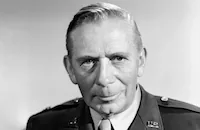
Ray Collins
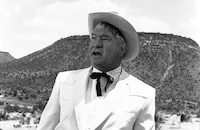
Chill Wills
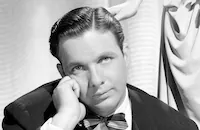
Bob Crosby
Marta Linden
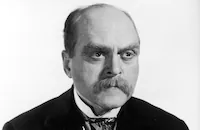
Grant Mitchell
George Offerman Jr.
Edward Fielding

Donald Curtis
Wm. "bill" Phillips

Douglas Fowley
Robert Condon
Dale Easton
Monte Lee
William Frambes
Bill Dyer
Ralph Gardner
Fred Graff
Jay Norris
Arthur Walsh
Bob Mccutchin
Eddie Hall
Kit Guard
Cliff Clark
William Newell
Reilley Walters

Louis Jean Heydt
Harry Strang
Larry Lund
Mike Kilian
Ken Scott
Stephen Barclay
Michael Owen
John Kelly
Joe Devlin
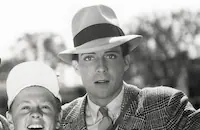
Dennis Moore
James Warren
Rod Bacon
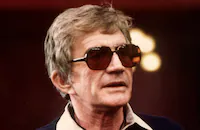
Blake Edwards
Harry Tyler
Myron Healey
Gerald Pierce
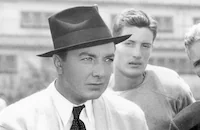
Fred Kohler Jr.
Maurice Murphy
Louis Hart
Bernie Sell
Charles King
Mary Mcleod
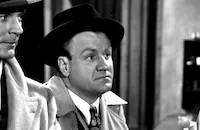
Lyle Latell
Hooper Atchley
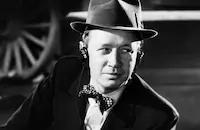
Eddie Acuff
Jack Luden
Frances Morris
James Carpenter
Clarence Straight
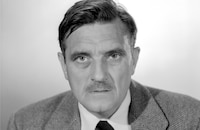
Morris Ankrum
Mickey Rentschler

Lee Phelps
Ben Gerien
Mary Elliott
Frank Faylen
Eddie Coke
Crew
Rollie Asher
Edward O. Bagley
Harry Beaumont
Otto Benninger
Joe L. Berchtold
Clarence Burdick
Richard Chaney
Harold Constable
Noble Craig
Grace Dubray
John Dullam
Eugene M. Finch
Capt. Edward J. Flynn
E. François
Tay Garnett
Cedric Gibbons
Barney Glazer
Stephen Goossón
Saunders Grace
Paul Greeley
A. Griffen
Kenneth L. Grossman
Ted Grouya
James Hackett
George Haight
James Harper
Leo Hayes
Clarence Hines
Frank E. Hull
Charles Hunt
Charles Hunt
Ralph Hurst
Irene
Raymond Johnson
Albert Keethe
Harry Kurnitz
Charles Lawton
Harold Lipstein
Frank Loesser
John Mahoney
Bob Martin
Charles O'malley
Harry Parkins
Howard Payne
Bernard Ponedel
James T. Seitz
Douglas Shearer
David Snell
David Williams
Edwin B. Willis
Jasper Woltz

Photo Collections
Videos
Movie Clip
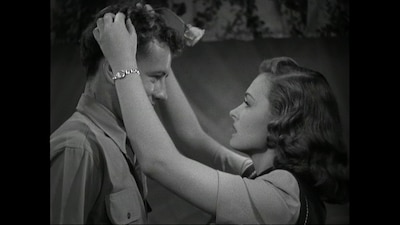

Trailer
Film Details
Technical Specs

Articles
See Here, Private Hargrove
In those days Walker had a reputation as a sensitive but cooperative young actor who was extremely well-liked on the MGM lot. Keenan Wynn, cast as a conniving fellow GI in See Here, Private Hargrove, had known Walker since both were involved in radio work in New York. Walker biographer Beverly Linet quotes Wynn: "We discovered that we worked very well as a team, and that bound us together.... It was a happy set, and I got to love the guy." But Walker's charming surface hid a great deal of inner turmoil. The product of a broken home, he was ridden with anxiety and inclined to overindulge in alcohol. His wife at the time, Jennifer Jones, about to emerge as an Oscar-winning superstar thanks to her performance in The Song of Bernadette (1943), would divorce Walker in 1945 after becoming romantically involved with producer David O. Selznick.
Director Tay Garnett, the uncredited director of the final section of Private Hargrove, recalled in his autobiography, Light Your Torches and Pull Up Your Tights, that Walker's mood swings when drinking could be extreme. One day, after belting several drinks at a small bar just outside the MGM gate, Walker caught sight of his own reflection in a cigarette-machine mirror. "In spontaneous savagery," wrote Garnett, "he drove his clenched fist through the mirror, scattering shards of glass in every direction, breaking several knuckles and severing an artery." Walker was carried to the studio hospital for treatment of his wounds. The actor's turbulent life, marked by nervous breakdowns as well as other acting successes, ended abruptly in his early 30s when his heart stopped after doctors gave him sedatives to control another emotional outburst.
Garnett had been called in for emergency work on Private Hargrove after the original director, Wesley Ruggles, had moved on to another assignment. In view of the fact that World War II was ongoing, MGM brass had insisted that this rough-and-tumble comedy of service life be given an ending of "significance, importance and reverence." Ruggles unhappily complied, but a preview screening made it clear that audiences hated the "noble" ending. Garnett's final section, in tone with the rest of the movie, helped make Private Hargrove a great success. The film spawned a sequel, What Next, Corporal Hargrove? (1945), and led to a screenwriting career for the real-life Hargrove, whose credits include The Music Man (1962), 40 Pounds of Trouble (1963), and TV's I Spy and Maverick.
Producer: George Haight
Director: Wesley Ruggles, Tay Garnett (uncredited)
Screenplay: Harry Kurnitz, from book by Marion Hargrove
Art Direction: Cedric Gibbons, Stephen Goosson
Cinematography: Charles Lawton Jr.
Editing: Frank E. Hull
Original Music: Frank Loesser, David Snell
Cast: Robert Walker (Pvt. Marion Hargrove), Donna Reed (Carol Halliday), Keenan Wynn (Pvt. Mulvehill), Robert Benchley (Mr. Halliday), Ray Collins (Brody S. Griffith), Chill Wills (Sgt. Cramp), Bob Crosby (Bob).
BW-102m. Closed captioning.
by Roger Fristoe

See Here, Private Hargrove
Quotes
Trivia
Notes
Marion Hargrove began his writing career as a reporter for the Charlotte News in North Carolina and was unanimously voted Fort Bragg's "worst all-round selectee." According to contemporary sources, playwright Maxwell Anderson helped Hargrove find a publisher for his autobiography, which became a best-seller. The Variety review noted that "the book...was a find and the cost of the film rights reasonable because the purchase was made long before the Hargrove piece hit the bookstalls and the best-seller class." Hargrove went on to a successful career as a screenwriter, authoring such films as The Music Man (1962) and Boys Night Out (1962).
In September 1942, Hollywood Reporter reported that Hugo Butler had been assigned to write the film's script, but his contribution to the completed film, if any, has not been determined. According to War Dept. records, contained at NARS In Washington, D.C., some scenes in the film were shot at Fort Bragg, NC. Capt. Edward J. Flynn, who was associated with the Fort Bragg Field Artillery unit, served as a technical advisor on the production, overseeing such details as the length of the actors' hair and their Army costumes. M-G-M was also granted permission to shoot some "summer" scenes at Camp Roberts, CA, according to Hollywood Reporter and War Dept. records. Army stock shots were used in the picture, according to War Dept. records. In November 1943, Tay Garnett was assigned to direct retakes on the picture, as Wesley Ruggles had already begun shooting War and Peace in England. Although Hargrove, who had been promoted to sergeant by the time the film was completed, asked permission to preview and consult on the picture, the Army denied his request.
Although credited in Call Bureau Cast Service in the roles of "Farmer" and "Farmer's wife," Louis Mason and Connie Gilchrist did not appear in the completed film. Hollywood Reporter lists Victor Kilian, Jr., Jack Purcell, Bill Hickman, David Essex, Jerry Shane, Margaret Adden, Naomi Scher, Bert Callaghan, Dick Elliott and Rudolph Martin, who was Hargrove's cousin, as cast members, but their participation in the completed film has not been confirmed. In addition, Hollywood Reporter announced that Mitchell Kowall had been tested for a character role, but his appearance in the completed film has not been confirmed.
Late January 1944 War Dept. records indicate that M-G-M was planning a February 17, 1944 premiere of the film at Fort Bragg, and a February 19, 1944 opening at Charlotte, NC, Hargrove's hometown. These premieres have not been confirmed, however. According to Hollywood Reporter, M-G-M "kicked off" a nationwide Red Cross drive with a March 21, 1944 "invitational screening" of the film for the armed forces and civic leaders. In the spring of 1944, Parents' magazine, as well as the National Screen Council, cited the film for excellence, according to Hollywood Reporter. In 1945, M-G-M released a sequel to See Here, Private Hargrove, titled What Next, Corporal Hargrove? . Robert Walker and Keenan Wynn reprised their roles for the sequel.















